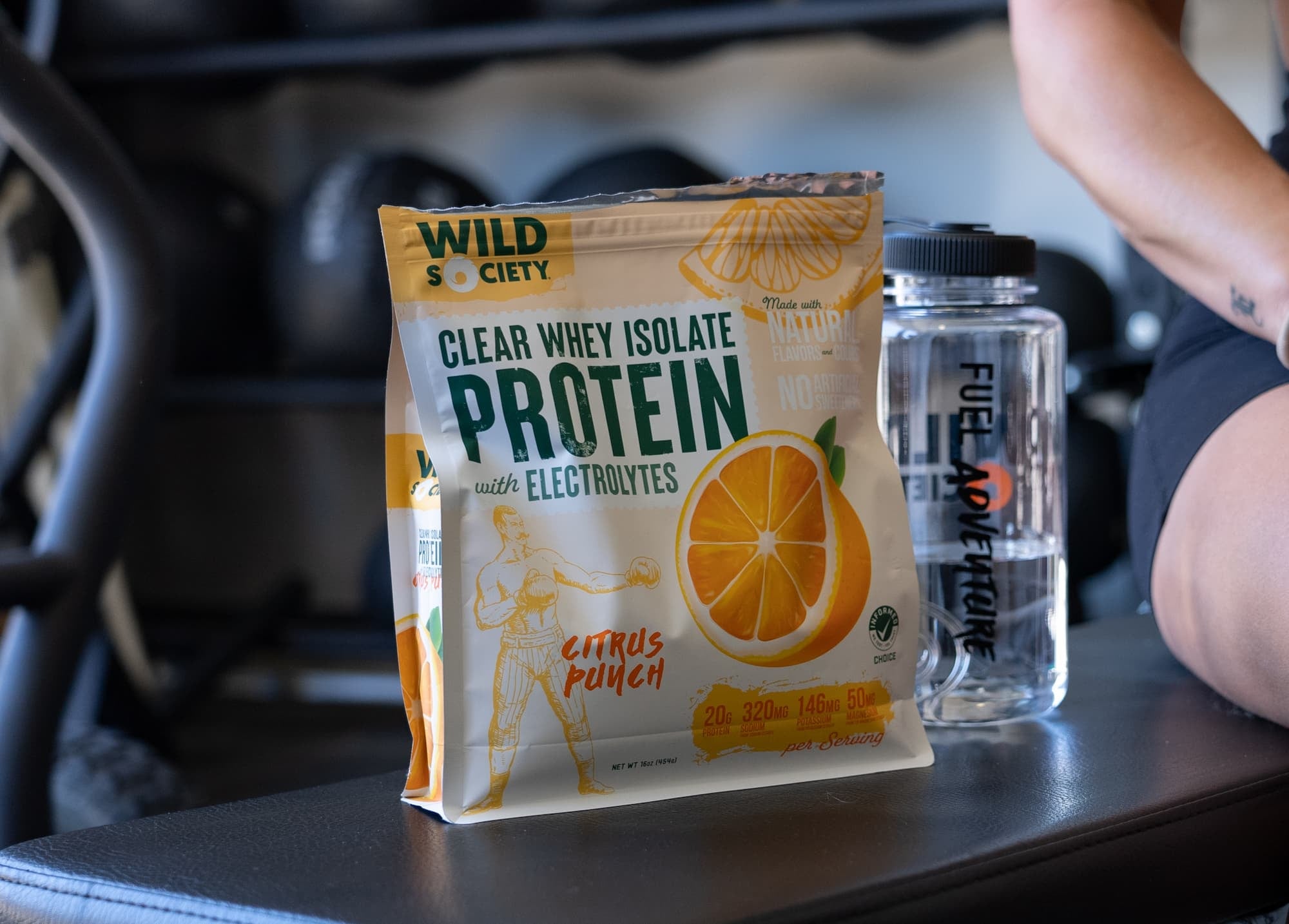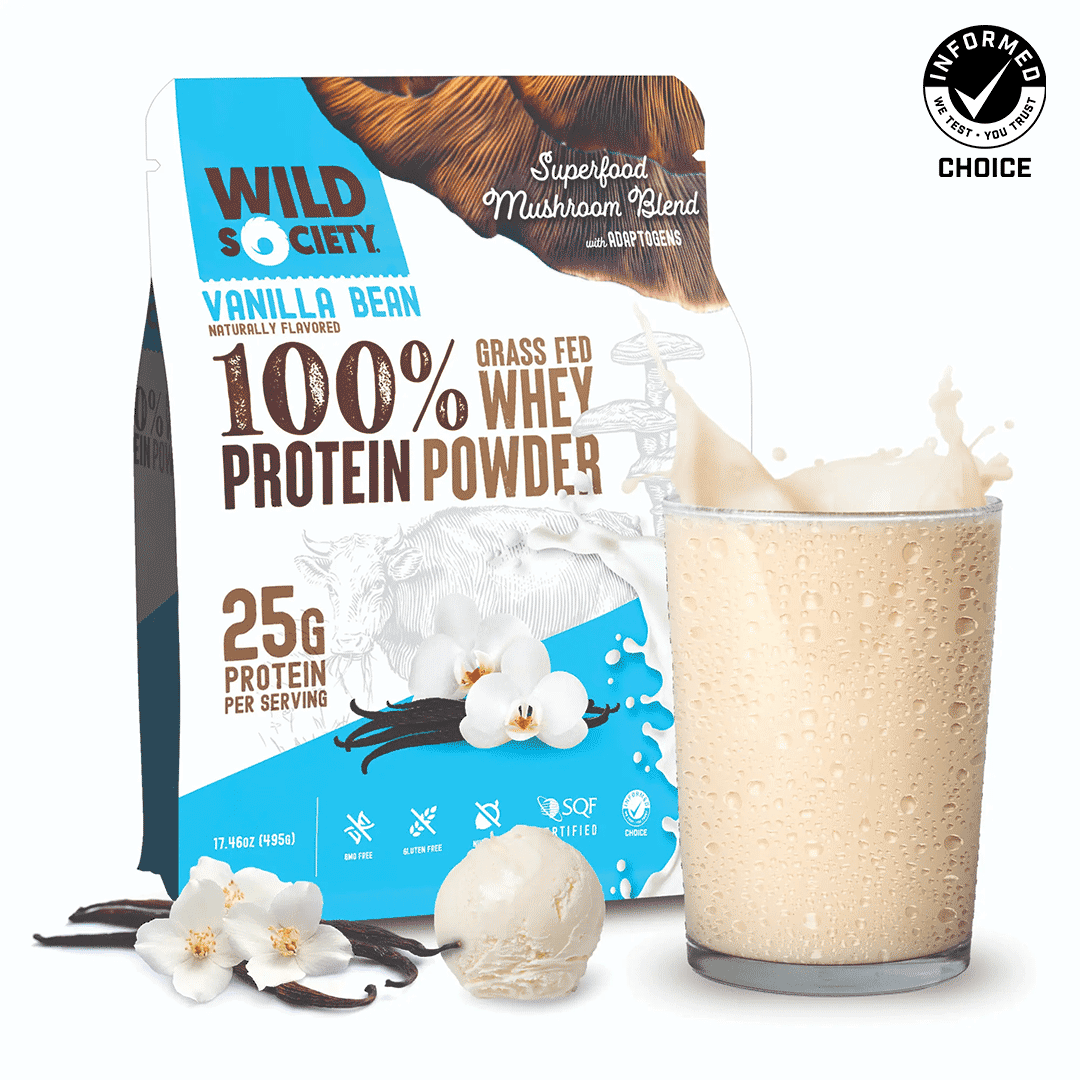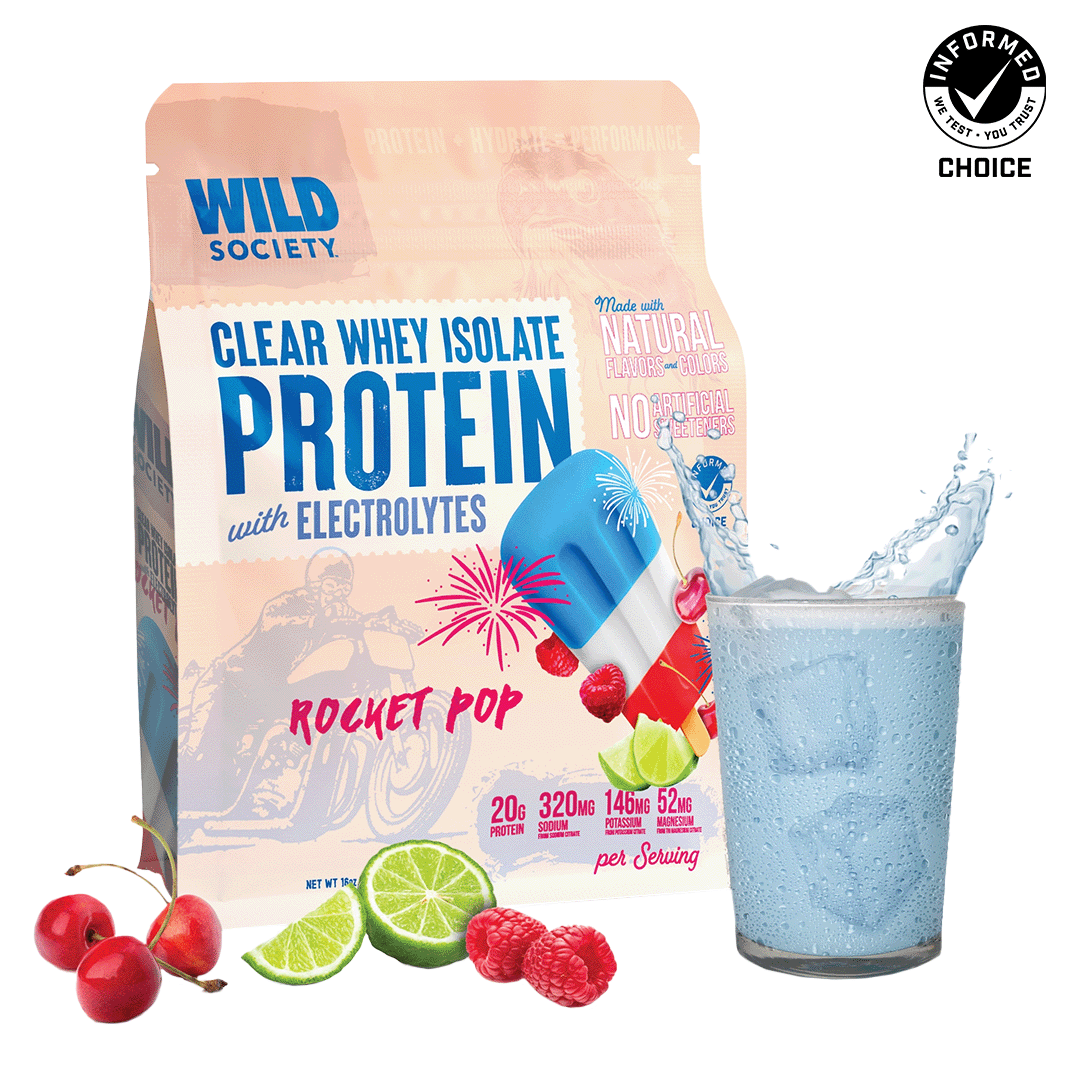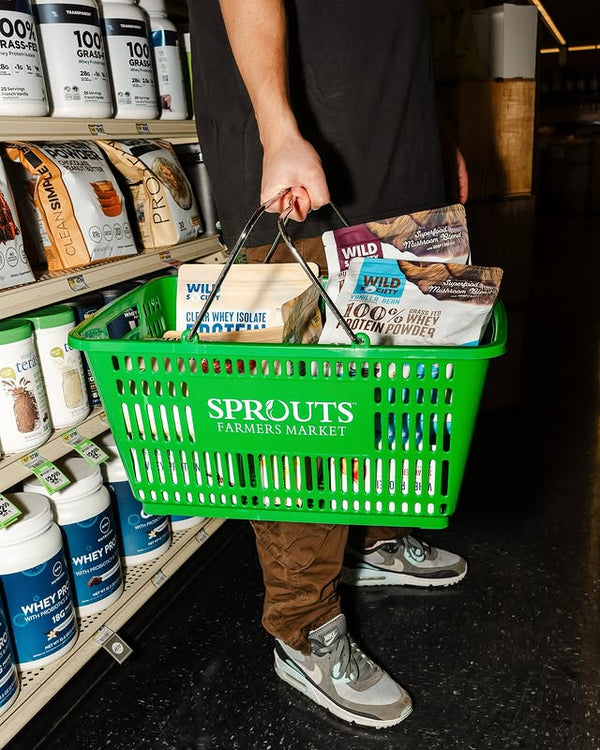What to Eat on Semaglutide: 7 Satisfying Options
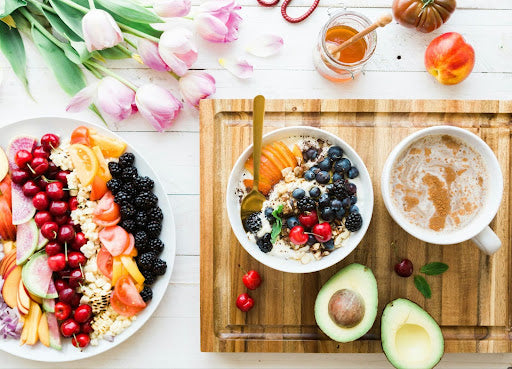
It seems like every time a celebrity drops a few pounds, the internet is quick to scream, “Ozempic!” But what most don’t realize is that Ozempic is just a brand name for semaglutide, and it’s not only for those in the spotlight. Semaglutide is a medication designed to help blood sugar and support weight loss.
If you found yourself here, you’re probably no stranger to semaglutide and its appetite-suppressing properties. But here’s the thing about semaglutide and other medications like it: they curb your appetite, but that doesn’t mean that your body needs less nutrients or you should skip meals. So, if you’re wondering what to eat on semaglutide, keep reading.
You might notice that food doesn’t hit the same when you’re on the medication. With less room (and desire) to eat, every bite becomes essential. Fueling your body with the right nutrient-dense foods is key to staying energized, satisfied, and healthy.
In this guide, we will walk you through satisfying options and share tips for clean, mindful eating—all with a natural, holistic approach to your wellness.
What is Semaglutide, and How Does it Affect Appetite?
You’ve probably heard the buzz about semaglutide, but what exactly is it? Simply put, semaglutide is an FDA-approved medication used to treat Type 2 diabetes by regulating blood sugar and insulin levels. And now, it’s well known to help people lose weight and help with cravings.
Semaglutide is what is known as a GLP-1 receptor agonist, a class of medications that can slow down digestion, increase feelings of fullness, and reduce hunger. Think of it as a little helper for your appetite. It works with your body’s natural hormones to help you feel fuller, letting your metabolism run its healthy magic.
In order to stay healthy while eating less, focusing on high-quality foods is vital while you’re on semaglutide. From lean proteins to unsaturated fats, and plenty of fiber, certain foods are necessary to maintain your energy and muscle mass. Let’s dig into what you should actually eat.
Key Principles of Eating on Semaglutide
Taking on a balanced, clean approach to nutrition is challenging for many individuals, especially for those on a semaglutide diet. Here’s a breakdown of what to eat on semaglutide to fuel your body properly:
Prioritize Lean Protein
Protein is essential for retaining your muscle mass. As you lose weight, consuming lean protein is key to feeling satisfied longer. Incorporating meats like chicken and fish, eggs, or tofu can help support your metabolism.
Choose High-Fiber Foods
Fiber-filled foods also keep you fuller for longer. They also aid digestion, balance blood sugar levels, and prevent constipation (a common side effect of semaglutide). Vegetables, legumes, and whole grains provide lasting energy and support your gut health.
Incorporate Healthy Fats
Healthy, unsaturated fats are crucial for brain function and hormone balance when you’re on a semaglutide diet. They also help your body absorb important nutrients like vitamins A, D, E, and K. Think avocados, olive oil, and nuts for a satisfying, heart-healthy boost.
Stay Hydrated!
Semaglutide may cause nausea and fatigue, which can worsen when you’re dehydrated. Prioritize your water intake (between 11-15 cups is ideal for adults) to keep your body functioning at its best.
Limit Processed Foods & Sugars
Highly processed foods and added sugars can trigger higher blood sugar, issues with digestion, and leave you feeling tired. Try to stick to whole, nutrient-dense foods to keep your energy steady.
7 Satisfying Food Options for Those on Semaglutide
We’ve compiled a list of the best foods for semaglutide to help you feel satisfied, healthy, and nourished.
1. Lean Proteins
Protein is essential for muscle mass and curbing your hunger. It also helps minimize muscle loss that can happen when you’re eating on a GLP-1 medication. Choose your favorites from options such as:
- Grass-fed whey protein
- Clear whey isolate protein
- Chicken breast
- Turkey
- Fish (salmon, tuna, or other fatty fish)
- Eggs
- Greek yogurt
- Cottage cheese
- Tofu and tempeh
2. High-Fiber Vegetables
Veggies rich in fiber support digestion and help you stay satiated while on a semaglutide diet. Go for colorful options like:
- Spinach
- Kale
- Broccoli and cauliflower
- Brussel sprouts
- Zucchini
- Bell peppers
3. Whole Grains
Clean, complex carbs provide slow-digesting energy and additional fiber to help maintain your blood sugar to an equilibrium. Here are a few staples:
- Quinoa
- Oats
- Brown rice
- Whole wheat bread (in moderation)
4. Healthy Fats
Unsaturated fats keep you satisfied and support your hormones, heart, and brain functions. To tick this box, reach for foods like:
- Avocados
- Nuts and seeds (almonds, chia seeds, flax seeds)
- Extra virgin olive oil
- Fatty fish
5. Hydrating Foods
Water-rich foods are important on a semaglutide diet. They support digestion and reduce the risk of dehydration, which may lead to discomforting side effects. Some of our favorites include:
- Clear whey isolate protein with electrolytes
- Cucumbers
- Watermelon
- Bone broth or vegetable-based soups
- Herbal teas
6. Low-Sugar Snacks
A little treat is always necessary. When eating on a GLP-1 medication, it’s important to keep your sugar intake in moderation. Reach for snacks that balance protein, fiber, and healthy fats, such as:
- Hummus with veggie sticks
- Hard-boiled eggs
- Cheese sticks
- Chia pudding
Our Recommendation: Caveman Eats High-Protein Bites

-
Key Ingredients: Grass-fed beef, sea salt
- Protein Content: 19g per serving
Caveman Eats is a great, high-protein option for a quick bite. Air-dried and thinly sliced, this clean beef jerky will keep you satiated longer.
7. Meal Replacements
You may not always be up for a full meal. A high-quality, nutrient-heavy meal replacement can help fill the gap without skipping meals. Try out an easy option like:
- Nutrient-dense smoothies with high fiber and healthy fats
- Clean, natural protein shakes
Our Recommendation: Grass-Fed Whey Protein Powder

-
Key Ingredients: Grass-fed whey protein concentrate, mushroom blends (reishi, cordyceps, eleuthero), sunflower lecithin, natural flavors
- Protein Content: 25g per serving
Wild Society Nutrition’s smooth protein blend will keep you full and support muscle recovery. It’s a perfect alternative for days when your appetite is low.
Tips for Eating Mindfully on Semaglutide
The best foods for semaglutide are those that contain a healthy balance of key macronutrients and a delicious taste. Finding meals that you genuinely look forward to eating can make a big difference. Here are a few other tips to keep in mind to set yourself up for success:
- Eat smaller, nutrient-dense meals. When thinking about what to eat on semaglutide, it’s important to focus on quality over quantity. Think of colorful, healthy foods that fuel your body without overwhelming your stomach.
- Learn to listen to your hunger cues. Eating on a GLP-1 medication can dull your sense of hunger, so it’s vital to check in with your body throughout the day. Eat when you're hungry and stop when you're satisfied to prevent discomfort.
- Chew slowly and savor your meals. Eating too quickly can cause nausea and bloating, especially on semaglutide. Slowing down can help you enjoy your food and give your body time to register fullness.
-
Stay consistent with protein and fiber intake. Clean protein prevents muscle loss, while fiber keeps digestion running smoothly. Prioritizing both helps you stay strong and energized after a meal.
Foods to Limit or Avoid
Finding what to eat on semaglutide can be intimidating when some foods worsen side effects or hinder your progress. Here are a few top offenders to be mindful of or, if possible, avoid altogether:
- Highly Processed Foods: Frozen or prepackaged foods can spike your blood sugar, cause fatigue, and upset digestion.
- Fried & Greasy Foods: Heavy, greasy meals are harder to digest and may increase side effects like nausea or an upset stomach.
- Sugary or Carbonated Drinks & Alcohol: Because semaglutide slows down digestion, fizzy drinks like soda, energy drinks, or beer can lead to bloating and discomfort.
Deciding what to eat on semaglutide doesn’t have to be complicated, but it does require you to be intentional with what you consume. Focusing on lean protein, fiber-rich vegetables, healthy fats, and hydration will help you keep a balance of energy, muscle mass, and overall wellness as you manage your weight.
Remember, this journey is about fueling your body with clean, nutrient-dense foods that support your health goals.
For more tips on clean nutrition and high-protein supplements, explore Wild Society Nutrition’s resources and top-quality products designed to help you achieve the best you.




